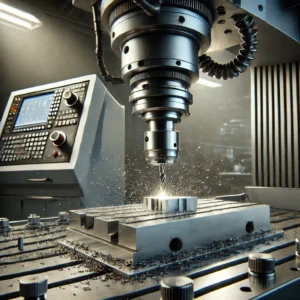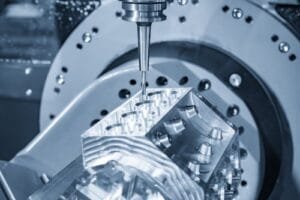In the rapidly evolving landscape of CNC cutting, understanding cutting speeds and feed rates is crucial for optimizing machining processes. This article delves deep into these concepts, exploring their significance, how they affect machining quality, and what trends are shaping the future of CNC cutting. At CNCRUSH, a specialized CNC cutting service provider with over 12 years of experience in China, we focus on delivering high-quality CNC milled parts and CNC turned parts to meet the needs of our clients.

The Importance of CNC Machining Cutting Speeds and Feed Rates
Cutting speeds and feed rates are fundamental parameters that influence the efficiency and quality of CNC machining. The cutting speed refers to the speed at which the cutting tool engages with the material, typically measured in surface feet per minute (SFPM) or meters per minute (MPM). Feed rate, on the other hand, is the speed at which the workpiece is fed into the cutting tool, expressed in inches per minute (IPM) or millimeters per minute (MPM).
- Impact on Machining Quality
- Higher cutting speeds can enhance productivity but may lead to increased tool wear and reduced part quality. Conversely, lower speeds can improve surface finish but may extend production time. Finding the right balance is essential for optimal performance.
- Tool Life and Maintenance
- Understanding these parameters allows for better tool management. Properly adjusted cutting speeds and feed rates can prolong tool life, reducing downtime and maintenance costs.
- Material Considerations
- Different materials require specific cutting speeds and feed rates. For instance, aluminum can be machined at higher speeds than steel due to its softer nature, affecting the choice of tooling and process parameters.
- CNC Milled Parts vs. CNC Turned Parts
- In CNC milling, cutting speeds and feed rates directly impact surface finish and dimensional accuracy. For CNC turning, these parameters are crucial for chip formation and overall machining efficiency.
Trends of CNC Cutting Speeds and Feed Rates

1. Advanced CNC Technology Integration
With the advancement of CNC technologies, including multi-axis machines and intelligent CNC controls, there is a growing capability to optimize cutting speeds and feed rates dynamically. This allows for real-time adjustments based on material properties and tooling conditions, resulting in improved machining efficiency and product quality.
2. Automation and Robotics
Automation in CNC machining has become increasingly prevalent, impacting how cutting speeds and feed rates are determined. Automated systems can consistently apply optimal parameters, reducing variability in production and enhancing overall quality.
3. CNC cutting Artificial Intelligence (AI)
AI algorithms are now being utilized to analyze data from machining processes, predicting the best cutting speeds and feed rates for specific materials and tools. This not only increases efficiency but also aids in preemptively addressing potential issues before they arise.
4. Sustainability and Material Recycling
Sustainability initiatives are shaping how CNC machining processes are developed. By optimizing cutting speeds and feed rates, manufacturers can reduce material waste and energy consumption. The focus on sustainable practices is driving innovation in tool technology and machining strategies.
5. Training and Workforce Development
As CNC technology evolves, the need for skilled operators who understand cutting speeds and feed rates is paramount. Continuous education and training programs are essential for workforce development, ensuring that employees can effectively manage and optimize these parameters.
6. Custom CNC Cutting Solutions
The demand for custom CNC solutions has led to more tailored approaches in setting cutting speeds and feed rates. At CNCRUSH, our CNC machining services are designed to accommodate specific client needs, ensuring that every project receives the appropriate processing parameters for the best results.
7. Increased Use of Hybrid Machining Processes
Hybrid machining combines traditional machining techniques with additive manufacturing. This innovative approach allows for more complex geometries and enhanced performance characteristics, necessitating unique considerations for cutting speeds and feed rates.
8. Focus on Precision and Quality
As industries demand higher precision and quality, CNC machining must adapt. This includes careful calibration of cutting speeds and feed rates to achieve the desired tolerances and surface finishes.
9. Adoption of Industry 4.0 Practices
The fourth industrial revolution is pushing CNC machining into new territories. Smart factories utilizing IoT technologies can continuously monitor and adjust cutting parameters in real-time, improving efficiency and reducing waste.
10. Client-Centric CNC Cutting Services
At CNCRUSH, we understand that different clients have unique needs. Our focus on providing specialized CNC machining services allows us to adapt cutting speeds and feed rates to meet specific project requirements, whether for CNC milled parts or CNC turned parts.
Analyzing CNC Cutting Speeds and Feed Rates: Tables
| Material Type | Recommended Cutting Speed (MPM) | Recommended Feed Rate (MPM) |
|---|---|---|
| Aluminum | 200 – 300 | 0.5 – 1.5 |
| Steel | 40 – 100 | 0.2 – 0.5 |
| Brass | 100 – 200 | 0.3 – 0.7 |
| Plastic | 150 – 250 | 0.5 – 1.2 |
Table 1: CNC Cutting Speeds and Feed Rates by Material
| Tool Type | Average Tool Life (Hours) | Factors Influencing Tool Life |
|---|---|---|
| Carbide | 20 – 50 | Cutting speed, feed rate, material |
| HSS | 5 – 15 | Tool geometry, cooling conditions |
| Coated Tools | 30 – 70 | Coating type, machining conditions |
Table 2: Tool Life and Influencing Factors

FAQ Section
Q1: What is the optimal cutting speed for CNC machining?
A1: The optimal cutting speed varies based on material type, tooling, and machine capabilities. Generally, harder materials require slower speeds, while softer materials can be machined at higher speeds.
Q2: How do feed rates affect surface finish?
A2: Feed rates directly impact the surface finish of machined parts. Higher feed rates can lead to rougher surfaces, while lower feed rates typically improve surface quality but increase machining time.
Q3: Can cutting speeds and feed rates be adjusted during machining?
A3: Yes, advanced CNC machines equipped with intelligent controls allow for real-time adjustments of cutting speeds and feed rates to adapt to changing conditions during the machining process.
Conclusion
Understanding cutting speeds and feed rates is integral to achieving optimal performance in CNC cutting. As a leader in the CNC cutting service industry, CNCRUSH is dedicated to providing high-quality CNC milled parts and CNC turned parts tailored to the unique requirements of our clients. With a commitment to innovation and excellence, we invite you to explore our services for precision CNC cutting solutions that leverage cutting-edge technology and expertise.
